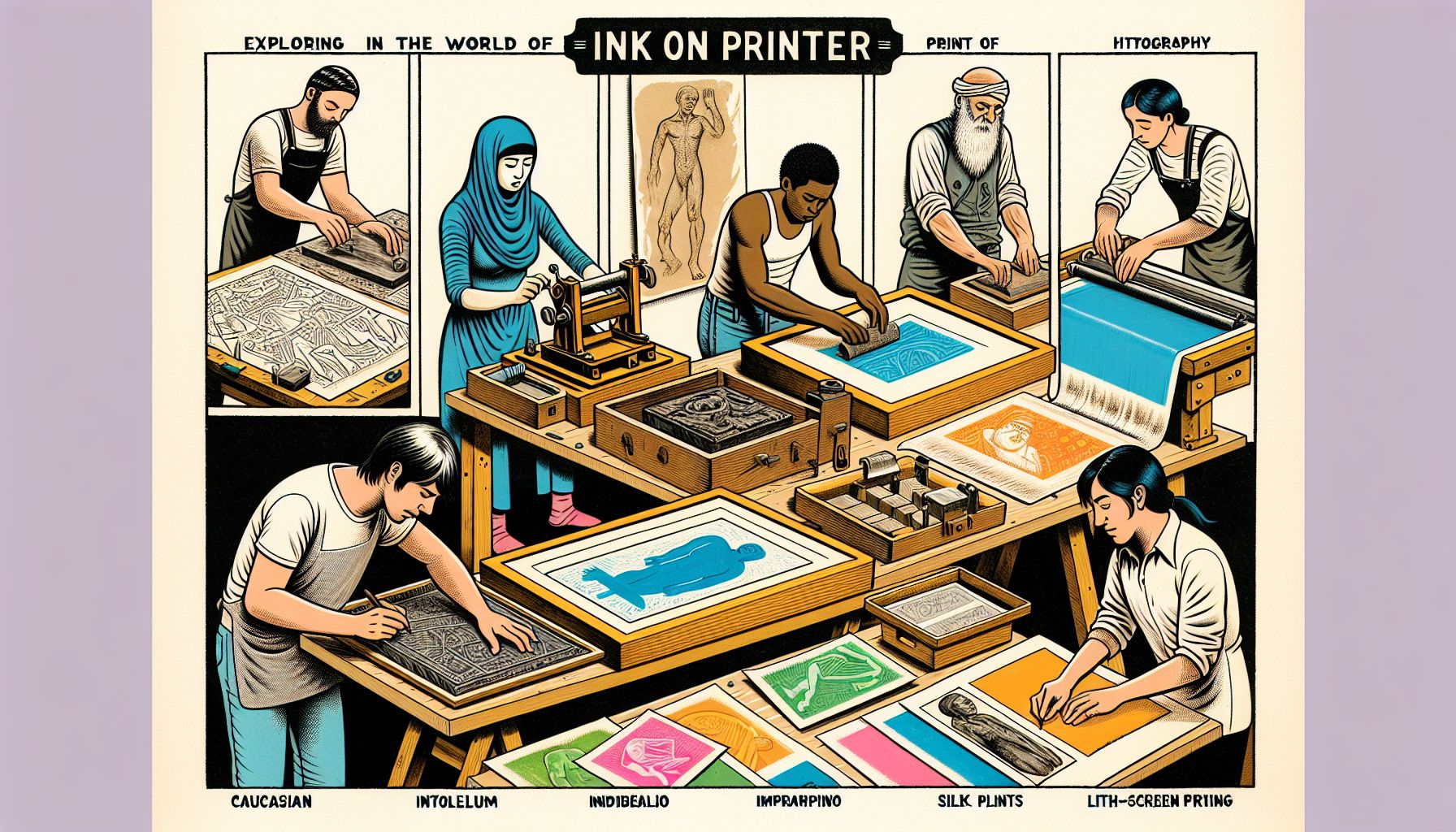Understanding the Different Printing Techniques: Exploring the World of Ink on Paper
Printing has come a long way since its inception, and today, we are surrounded by a multitude of printing techniques. From traditional methods that have stood the test of time to cutting-edge innovations shaping the future of the industry, the world of printing is as diverse as it is fascinating. In this blog post, we will unravel the various printing techniques and explore their unique characteristics, applications, and advantages. Whether you are a graphic designer, a business owner, or simply curious about the art of putting ink on paper, this guide will serve as a comprehensive introduction to the captivating realm of printing.
Introduction to Printing Techniques
Printing techniques encompass a wide range of methods utilized to transfer ink onto different surfaces, with paper being the most common medium. Over time, various techniques have been developed, each offering distinct qualities and benefits. Understanding these techniques will not only assist in selecting the most suitable method for your printing needs but also allow you to appreciate the intricacies of the craft.
Traditional Printing Techniques
1. Letterpress Printing
One of the oldest forms of printing that has garnered recent popularity is letterpress. Originating in the 15th century, letterpress involves the use of raised metal or wooden type and ornaments that are inked and pressed onto paper. This technique creates a visually pleasing debossed effect, making it ideal for elegant and minimalist designs. It is notably used for high-quality business cards, wedding invitations, and stationery.
2. Offset Lithography
Offset lithography, commonly known as offset printing, revolutionized the industry in the 19th century and remains widely used today. This technique involves transferring an image onto a rubber blanket before transferring it onto paper. Offset lithography is known for its exceptional image quality, color accuracy, and cost-effectiveness, making it suitable for a wide range of applications such as newspapers, magazines, brochures, and packaging.
3. Flexography
Flexography, often referred to as flexo printing, utilizes flexible relief plates and a rotary press to transfer ink onto various substrates. Originally designed for printing on uneven surfaces, flexography has evolved to offer high-speed, cost-effective, and versatile printing. It is commonly used for packaging materials, labels, newspapers, and cardboard boxes.
4. Gravure Printing
Gravure printing, also known as intaglio printing, employs engraved cylinders that are filled with ink to produce high-quality prints. The recessed image areas on the cylinder hold the ink, which is then transferred onto the paper. Gravure printing is renowned for its ability to reproduce detailed images with exceptional clarity and consistency. It is commonly used for art books, magazines, catalogs, and packaging.
Digital Printing Techniques
1. Inkjet Printing
Inkjet printing, a popular technique in the digital era, involves placing droplets of ink onto paper to create an image. It offers versatility, quick turnaround times, and high-quality prints, making it suitable for a wide range of applications, including promotional materials, signage, and personalized items. Inkjet printers are available in both small-scale desktop versions and large-format industrial printers.
2. Laser Printing
Laser printing, based on electrophotographic technology, has become a dominant force in office and professional printing environments. It involves using a laser beam to create an electrostatic image on a drum, which is then transferred to paper using heat and pressure. Laser printers are known for their rapid printing speeds, precise text and graphics, and high-resolution output.
3. Digital Presses
Digital presses encompass a broad range of printing machines that combine the benefits of digital technology with the capabilities of traditional printing. They often incorporate toner-based or liquid ink printing technologies and are suitable for short-run color printing, variable data printing, and on-demand printing. With advancements in digital printing technology, these presses now offer quality that rivals traditional offset printing.
Specialized Printing Techniques
1. Screen Printing
Screen printing, also known as silk screening, involves passing ink through a mesh screen onto paper or other materials. Each color requires a separate screen, and the process is repeated for each color. Screen printing provides vibrant colors, durability, and versatility, making it popular for designs on textiles, posters, signage, and promotional items.
2. Embossing and Debossing
Embossing and debossing add a three-dimensional effect to printed materials. Embossing raises specific areas of the paper, creating a raised texture, while debossing presses the design into the paper, forming a depressed impression. These techniques are often used on business cards, book covers, and luxury packaging to enhance the visual and tactile experience.
3. Foil Stamping
Foil stamping involves applying a metallic or pigmented foil onto a surface using heat and pressure. This technique adds a reflective and luxurious finish to printed materials. Foil stamping is commonly used for business cards, invitations, certificates, and book covers to create a striking visual impact.
Conclusion
The world of printing techniques offers an abundance of choices that cater to diverse needs and preferences. From traditional methods that have stood the test of time to digital innovations that continue to push boundaries, each technique possesses distinct qualities and applications. By understanding these techniques, individuals and businesses can make informed decisions, selecting the most suitable method to achieve their desired outcomes. As technology evolves and new techniques emerge, the art of putting ink on paper continues to captivate and inspire, offering endless possibilities for designers, businesses, and enthusiasts alike.

